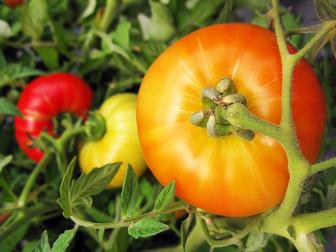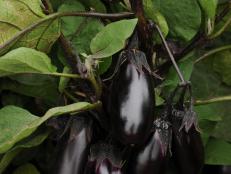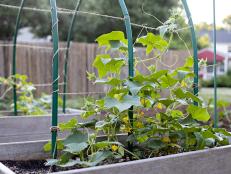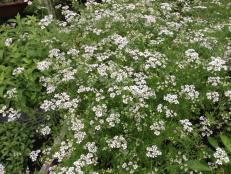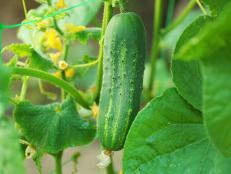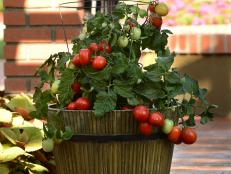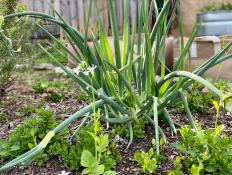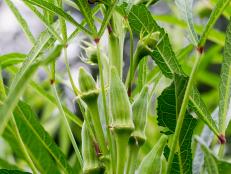Companion Planting for Tomatoes
Learn what companion plants to grow alongside your tomatoes to improve tomato plants' health and boost your harvest.

Sun-ripened tomatoes fresh off the vine are a delightful summer treat. The sheer variety of tomatoes is truly staggering, in terms of flavor, color, shape and growth habit. Unfortunately, our beloved tomatoes are susceptible to many pests and diseases that can impact plant health and productivity. Companion planting and using best cultural practices are good ways to grow a healthy and productive tomato patch.
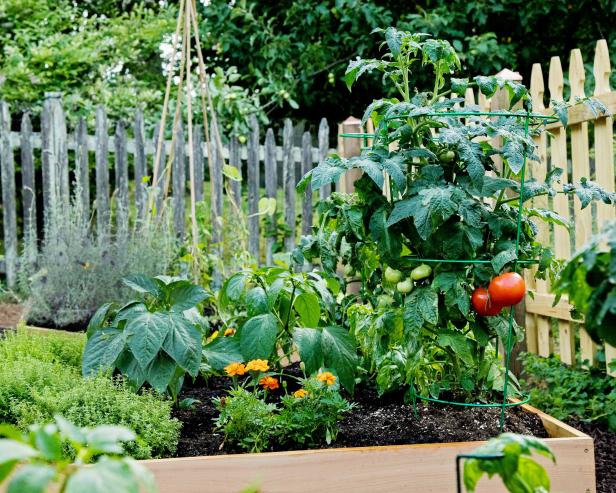
Shain Rievley
Growing tomato plants near a variety of other herbs and vegetables may increase your tomato harvest.
What is Companion Planting?
Some plants just grow better together. Careful companion planting can encourage visits from pollinators and other beneficial insects, discourage damage from pests and diseases, and generally improve the health and quality of your tomatoes.
- Flowering insectary plants provide pollen and nectar to beneficial insects, including pollinators of tomato flowers and predators of tomato pests. Many predator species don’t exclusively eat pests, which means they need flowers throughout the season to keep their populations up.
- Trap crops are intended to be more attractive to the pest than the tomato plants. Growing a trap crop relatively nearby (depending on the pest) may distract pests and also create a buggy smorgasbord for predator species like lacewings and ladybugs.
- Repellent plants actually deter pests from the garden. Many species of repellent plants produce natural compounds in their leaves, flowers, and roots that repulse pests. Is it any surprise that fragrant herbs are often praised for their pest repellent qualities?
Tomato Companions
To Improve the Harvest
- Grow large or “hooded” flowers (like snapdragons, lupines and other members of the bean family) to attract bumblebees to the garden. Bumblebees use buzz pollination, which is a very efficient way to pollinate tomatoes and related solanaceous plants. Some varieties of tomatoes that are buzz pollinated may have yields up to three times higher than self-pollinated tomatoes.
- Companion planting with French marigold, basil and lettuce may improve the flavor of tomato fruits without creating a serious impact on yields. Actually, tomatoes grown with basil may yield more fruit than tomatoes grown alone.
To Control Pests
- The open flowers of herbs and vegetables in the Apiaceae family (such as dill, fennel, parsley and carrot) are accessible and attractive to tachinid flies and parasitic wasps, which will lay their eggs in hornworm caterpillars. When the eggs hatch, the larvae feed on the hornworm, stopping the caterpillar in its tracks. These flowers also attract many other predatory insects — including syrphid flies, lacewings and ladybugs — which eat aphids and other garden pests.
- The fragrant herbs thyme and basil deter yellow-striped armyworm moths from laying eggs.
- Basil also discourages hornworms and thrips from feeding on tomatoes. Caprese salad anyone?
- Growing French marigold with tomatoes will discourage whiteflies from feeding on foliage and fruit and will inhibit nematode development on tomato roots.
- Cowpeas can serve as a trap crop for the southern green stinkbug. Stinkbugs are mobile, so be sure to plant the cowpeas several feet away from the desired crops. If stinkbugs continue to be a pest, catch and remove any stinkbugs found feeding on cowpeas.

Julie Martens Forney
Dill is a helpful plant in the vegetable garden because its small flowers attract beneficial insects, including hoverflies and ladybugs (both prey on aphids), wasps of all sorts (prey on caterpillars and other insects), spiders and pollinating bees.
To Control Disease
- Chinese chives inhibit the bacteria that causes southern wilt of tomatoes. The chive roots actually exude an antibacterial product that suppresses the wilt bacteria population in the soil.
- Companion planting with potato onion, a perennial heirloom onion type, makes tomato plants more resistant to Verticillium wilt by encouraging tomato roots to produce antifungal exudates. Another benefit of combining potato onion with tomato crops is that tomato roots will grow more deeply in the soil, leading to more prolific shoot growth aboveground.
- Planting tomatoes after a cover crop of hairy vetch decreases many fungal diseases including early blight and Septoria leaf spot. Cut back hairy vetch in late spring when seed pods begin to form (but before seed is viable), and leave the residue on the soil surface as a mulch.
How to Plant, Grow and Care for Tomatoes
Consider this your ultimate guide to choosing tomato plants, planting, growing and caring for tomatoes, and harvesting the best-tasting tomatoes ever.
Bad Neighbors for Tomatoes
If your garden is plagued by thrips, avoid companion planting tomatoes with crops from the onion family. Onions, garlic and leeks can be susceptible to the same species of thrips that plague tomatoes.
Tips for Growing Tomatoes
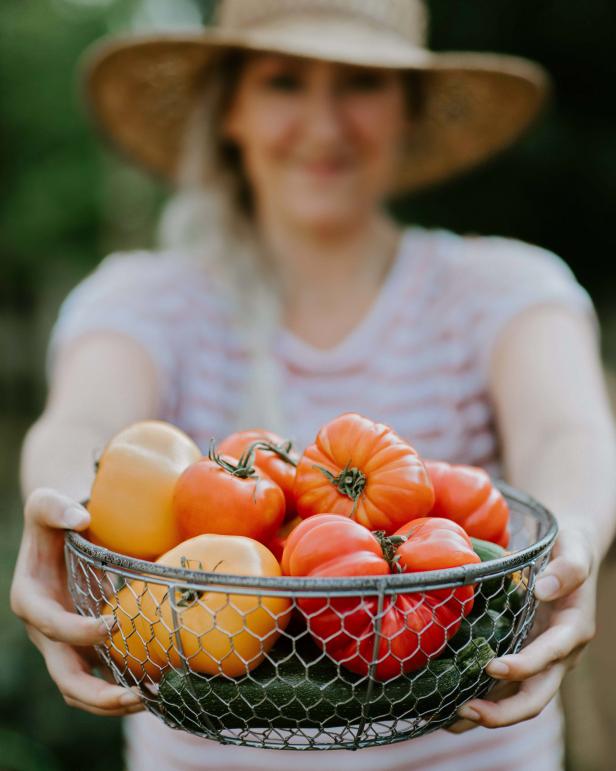
Shain Rievley
Try companion planting for your tomatoes to increase your harvest.
Did you know there are more than 6,000 varieties of tomato plants? Choosing the right tomato for you doesn’t have to be complicated. There are a lot of factors to consider, but when it comes to pests and diseases you should look for varieties that are resistant to any prevalent problems in your area. Your local extension service will be able to help identify any diseases to watch out for and recommend resistant varieties.
Start tomato seeds indoors 6 to 8 weeks before the last frost. Check with your local extension service to learn when the last frost typically falls in your area. Tomato seedlings are readily available from most plant garden centers in the spring.
Tomatoes need a warm and sunny spot, rich soil, consistent water and plenty of room to grow. Plants that live in less-than-ideal conditions may become stressed and more susceptible to pests. Thinning tomato plants or removing side shoots (also called “suckers”), following spacing guidelines for the variety, and avoiding planting other tall crops (even companion plants) too closely will allow plenty of air circulation, which will decrease disease pressure.
Tips for Crop Rotation
- Plants in the same family can be susceptible to the same pests. Group tomatoes with other solanaceous plants (like peppers, eggplants and tomatoes), and rotate where you plant these crops each season.
- If thrips are a problem in your garden, avoid planting tomatoes and other solanaceous vegetables after plants in the Amaryllidaceae family (like onions, garlic and leeks).
- Tomatoes are heavy feeders, meaning they need rich soil with lots of available nitrogen; so they should follow beans, peas and other legumes when possible, as these plants contribute nitrogen back to the soil.






